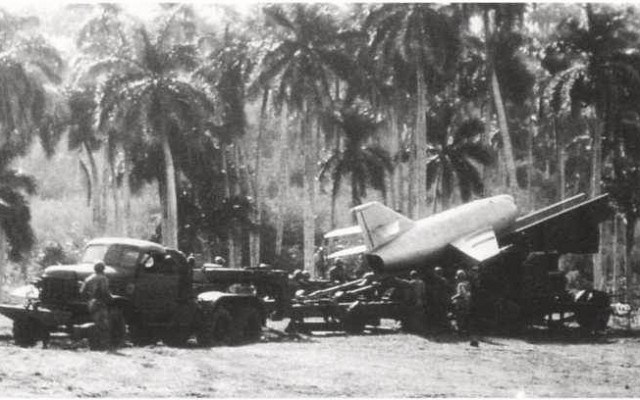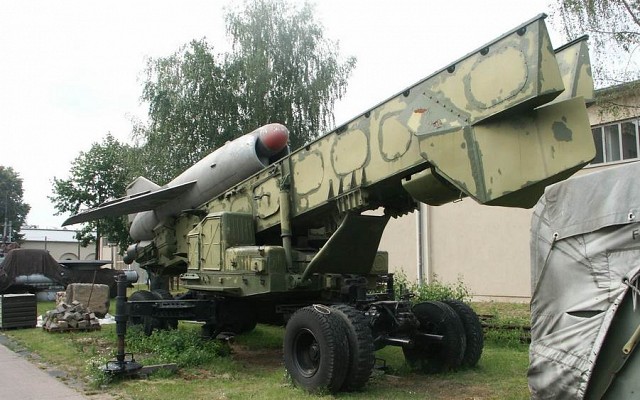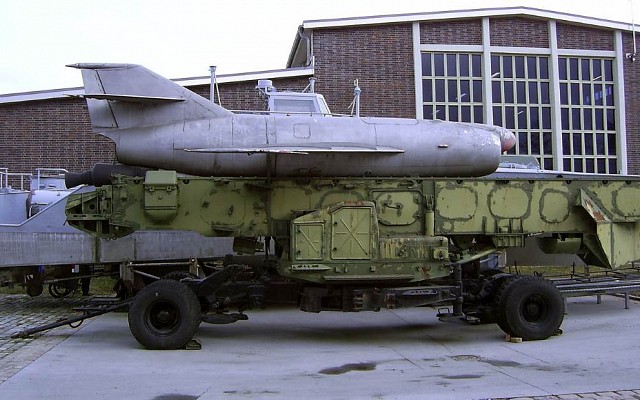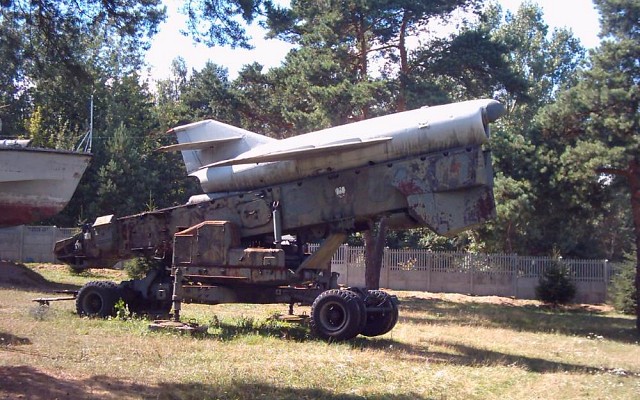S-2 Sopka
NATO: SS-C-2a Salish | SS-C-2b Samlet
Overview
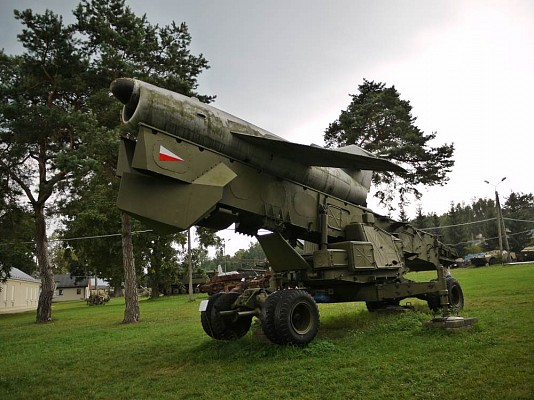
S-2 Sopka
Left side view of S-2 Sopka missile and launch rail on display.
Source: AdamoKrzys -
© GNU Attribution - Share Alike license
1958 for Sopka
SS-C-2b Samlet (NATO designation for mobile variant)
4K87 (GRAU designation)
Cuba
Egypt
Description
Introduction
The S-2 Sopka is an early Cold War era coastal defense system of Soviet origin. It was developed in the late 1950's. The anti-ship missile used in the S-2 Sopka system is derived from the KS-1 Komet (NATO: AS-1 Kennel) air launched anti-ship missile. Early production models were fixed site models known as Strela, Russian for Arrow, and known by NATO as the SS-C-2a Salish. The main production model is the S-2 Sopka, which is a mobile version and known by NATO as the SS-C-2b Samlet.
Design
The S-2 Sopka is a land based coastal defense system built around the S-2 missile, a land based version of KS-1 Komet air launched anti-ship missile. The KS-1 missile was developed only a few years earlier and was in turn derived from the MiG-15 fighter jet airframe. The S-2 missile is launched from a large fixed site launcher or trailer mounted launch rail. In addition to the command post and launchers the system consists of search radar, ranging radars and fire control radars.
Fire control
The S-2 missile uses semi-active radar homing. Upgraded missiles added an infrared seeker alongside the radar homing system. At launch the S-2 uses a pre-planned inertial flight profile at high altitude. The flight profile can be updated mid course. In the terminal phases the S-2 uses semi-active radar homing system, either with or without infrared augmentation. The trailer mounted S-1M fire control radar illuminates the target vessel. One or two fire control radars are used per battery.
Firepower
The S-2 Sopka system has a reported practical minimum range of 15 km and maximum range of 90 km. Maximum range depends on the selected flight profile and radar horizon. In theory the maximum range is 115 km. The S-2 missile flies at subsonic speed and carries a heavy 600 kg high explosive warhead. Test launches indicate a 70 to 80% hit rate. The dimensions, low speed and high altitude flight profile make the S-2 missile vulnerable to interception by aircraft, surface to air missiles and close in weapon systems.
Mobility
The S-2 Sopka is a mobile coastal defense system, but is not suited for shoot-and-scoot operations. Set up time is at least 30 minutes, and probably much longer in practice. All components of the S-2 Sopka are towed KrAZ-214 and ZiL-157 tactical trucks. The earlier Strela system uses fixed site launchers and is not considered mobile.
Users
The S-2 Sopka was initially adopted by the USSR in the late 1950's and was widely exported to Soviet allies in the early 1960's. The S-2 Sopka was transfered to Cuba alongside the similar looking FKR-1 tactical missile during the Cuban missile crisis. The S-2 Sopka was used operationally during the 1973 Yom Kippur war by Egyptian forces. The S-2 Sopka was supplemented by the more capable 4K44 Redut (NATO: SS-C-1 Sepal) and later by the more mobile 4K571Rubezh (NATO SS-C-3 Styx).
Variants
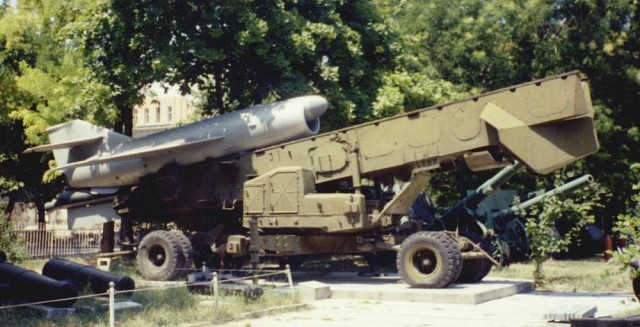
S-2 Sopka
Right side view of S-2 Sopka missile and launch rail in a Bulgarian museum.
Source: Pibwl -
© GNU Attribution - Share Alike license
List of variants
Details
System composition
S-2 Sopka system composition
The S-2 Sopka coastal defense system consists of many individual components that are used in conjunction to form a functional system. Three types of radar are used to find and engage targets.
In addition to the list there probably is a battery command post, communications equipment, generator trailers and maintenance equipment.
The composition of the earlier fixed site Strela system is believed to be similar to the S-2 Sopka.
Media
Related articles
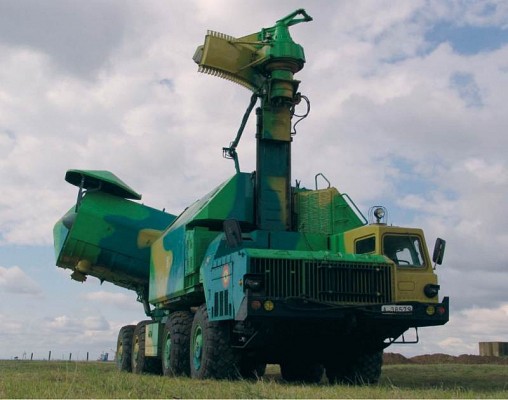
4K51 Rubezh
The 4K51 Rubezh (NATO: SS-C-3 Styx) is a Soviet coastal defense system that was also widely exported. Although Rubezh doesn't have the range of the Sopka, it is a more mobile system with fire control integrated into the launch vehicle.
